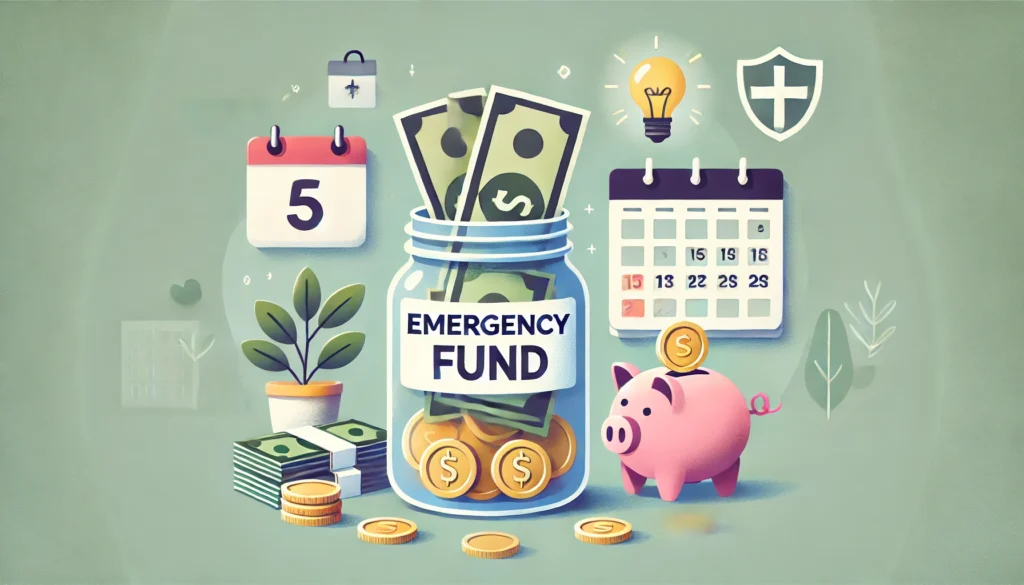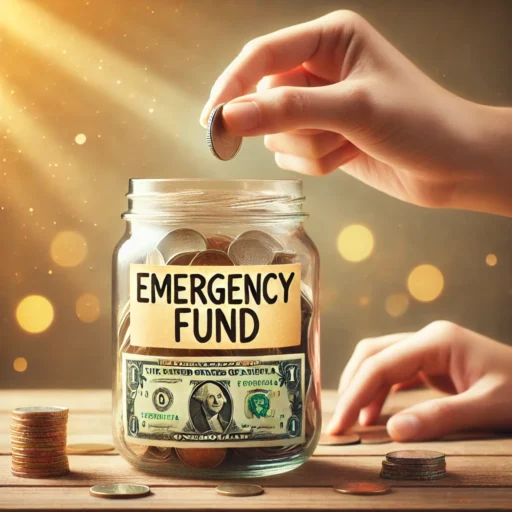A comprehensive Guide

In How to Build an Emergency Fund, we’ll walk you through the steps to build an emergency fund, even if you’re starting from scratch. Life is full of surprises, and not all of them are pleasant. Whether it’s a sudden medical expense, a car repair, or an unexpected job loss, emergencies can happen to anyone at any time. That’s why having an emergency fund is one of the most important steps you can take to protect yourself and your family from financial stress. An emergency fund is a stash of money set aside to cover unexpected expenses or financial emergencies. It acts as a safety net, giving you peace of mind and helping you avoid debt when life throws you a curveball.
If you don’t have an emergency fund yet, don’t worry—it’s never too late to start. Building an emergency fund might seem daunting, especially if you’re living paycheck to paycheck, but with a little planning and discipline, it’s entirely achievable.
Why Do You Need an Emergency Fund?
Before we dive into the “how,” let’s talk about the “why.” An emergency fund is not just a nice-to-have—it’s a must-have. Here’s why:
- Unexpected Expenses Happen: Life is unpredictable. Your car might break down, your roof might start leaking, or you might need to fly home for a family emergency. Without an emergency fund, you might have to rely on credit cards or loans, which can lead to debt.
- Job Loss or Income Reduction: If you lose your job or face a reduction in income, an emergency fund can help cover your living expenses while you get back on your feet.
- Peace of Mind: Knowing you have money set aside for emergencies can reduce stress and help you sleep better at night.
- Avoiding Debt: An emergency fund can help you avoid high-interest debt, which can be difficult to pay off and can hurt your credit score.
How Much Should You Save in Your Emergency Fund?
The amount you need in your emergency fund depends on your lifestyle, monthly expenses, and financial obligations. A common rule of thumb is to save three to six months’ worth of living expenses. However, if you’re just starting out, even a small emergency fund can make a big difference.
Here’s a breakdown of how to determine your target amount:
- Calculate Your Monthly Expenses: Add up all your essential expenses, such as rent or mortgage, utilities, groceries, transportation, insurance, and debt payments.
- Multiply by 3 to 6: Multiply your monthly expenses by the number of months you want to cover. For example, if your monthly expenses are $2,000, a three-month emergency fund would be $6,000, and a six-month fund would be $12,000.
- Adjust Based on Your Situation: If you have a stable job and a dual-income household, you might feel comfortable with a three-month fund. If you’re self-employed or have irregular income, you might want to aim for six months or more.
Step-by-Step Guide to Building an Emergency Fund

Now that you know why an emergency fund is important and how much you should save, let’s get into the practical steps to build one.
Set a Clear Goal:
Start by setting a specific savings goal. For example, if your monthly expenses are $2,000, your initial goal might be to save $1,000 (a mini emergency fund). Once you reach that, you can aim for $6,000 (three months’ worth of expenses). Having a clear goal will keep you motivated and focused.
Create a Budget:
A budget is your roadmap to saving money. It helps you understand where your money is going and identify areas where you can cut back. Here’s how to create a simple budget:
- Track Your Income and Expenses: Write down all your sources of income and list your monthly expenses.
- Categorize Your Spending: Divide your expenses into categories like housing, transportation, food, entertainment, and savings.
- Identify Areas to Cut Back: Look for non-essential expenses you can reduce or eliminate, such as dining out, subscriptions, or impulse purchases.
- Allocate Money to Savings: Treat your emergency fund like a bill. Set aside a specific amount from each paycheck to go directly into your savings.
Start Small:
If you’re new to saving, start with a small, achievable goal. Even saving $10 or $20 a week can add up over time. The key is to be consistent. As you get used to saving, you can gradually increase the amount.
Automate Your Savings:
One of the easiest ways to build an emergency fund is to automate your savings. Set up a recurring transfer from your checking account to your savings account each time you get paid. This way, you won’t have to think about it, and you’ll be less tempted to spend the money.
Save Windfalls and Extra Income:
Whenever you receive unexpected money, such as a tax refund, bonus, or gift, put a portion of it into your emergency fund. This can give your savings a significant boost without affecting your regular budget.
Cut Expenses and Increase Income:
If you’re struggling to save, look for ways to cut expenses or increase your income. For example:
- Cut Expenses: Cancel unused subscriptions, cook at home instead of eating out, or shop for cheaper insurance rates.
- Increase Income: Take on a side gig, sell items you no longer need, or ask for a raise at work.
Keep Your Emergency Fund Separate:
To avoid the temptation to dip into your emergency fund for non-emergencies, keep it in a separate savings account. Look for a high-yield savings account that offers a higher interest rate, so your money can grow over time.
Only Use It for True Emergencies:
An emergency fund should only be used for genuine emergencies, such as medical bills, car repairs, or essential living expenses during a job loss. It’s not for vacations, shopping sprees, or other non-essential purchases.
Replenish Your Fund After Use:
If you need to use your emergency fund, make it a priority to replenish it as soon as possible. Go back to your budget and adjust your savings plan until your fund is back to its target amount.
Celebrate Milestones:
Building an emergency fund takes time and effort, so don’t forget to celebrate your progress along the way. Whether you’ve saved your first $100 or reached your six-month goal, take a moment to acknowledge your achievement.
Tips for Staying Motivated:
Building an emergency fund can feel like a long journey, but these tips can help you stay on track:
- Visualize Your Goal: Imagine how it will feel to have financial security and peace of mind.
- Track Your Progress: Use a savings tracker or app to see how much you’ve saved over time.
- Stay Consistent: Even small contributions add up over time.
- Remind Yourself of the “Why”: Whenever you feel tempted to skip a savings contribution, remind yourself why you’re building an emergency fund.
Recommended: How to Reduce Debt Fast
Final Thoughts
An emergency fund is more than just a financial tool—it’s a lifeline that can help you navigate life’s uncertainties with confidence. By following the steps outlined in this article, you can start building your emergency fund today, no matter how small your initial contributions may be. Remember, the key is to start, stay consistent, and keep your eyes on the goal. Over time, you’ll build a financial cushion that can protect you from life’s unexpected challenges and give you the peace of mind you deserve.
